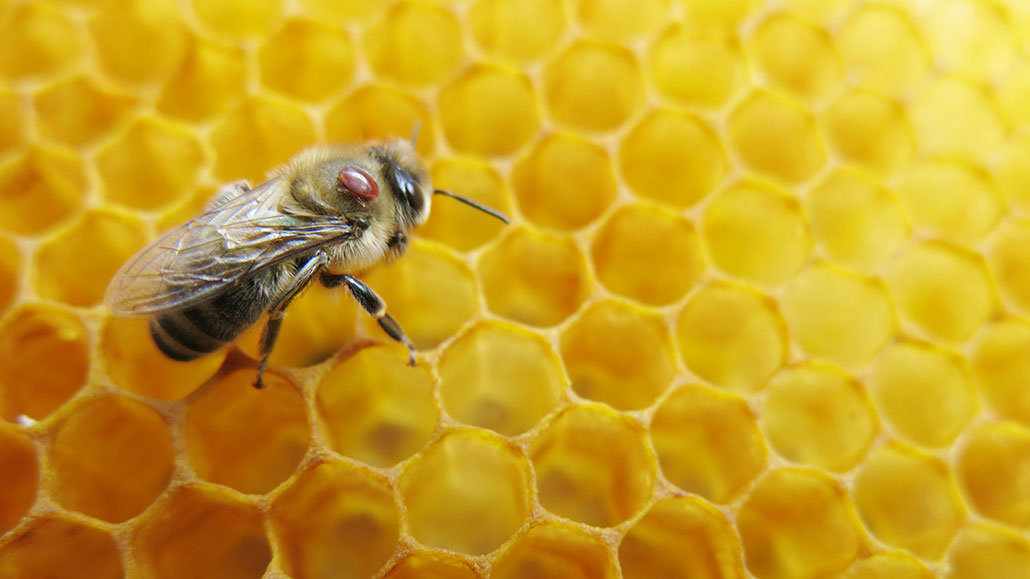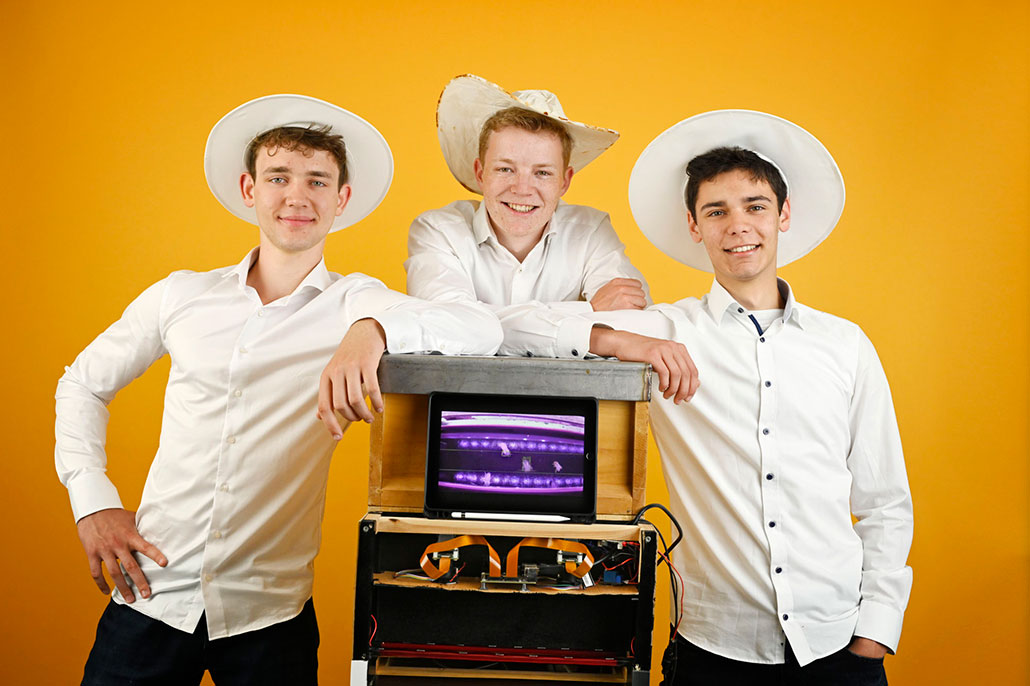A device spots and counts honeybees hosting a dangerous parasite
The Varroa mites are a leading cause of death for U.S. and European honeybees

Varroa mites, like the brown one behind the head of this bee, can kill off colonies of honeybees. At the 2023 Regeneron International Science and Engineering Fair, three teens showed off their automated system to detect the pests on bees. It could help beekeepers know when to apply mite-killing pesticides.
Bee-individual/iStock/Getty Images Plus
DALLAS, Texas — Honeybees are dying across much of their range. A parasite known as the Varroa mite is being blamed for many of the sick and dying colonies. A trio of teens has now developed an automated system that can detect — and track — mite-infected bees as they go in and out of their hives. This could help beekeepers know how many bees are affected — and when it’s time to treat the hive with mite-killing chemicals.
Albert Dehne, 19, Daniel Cermann, 19, and Richard Ueltzen, 18, showcased their new imaging system last month at the Regeneron International Science and Engineering Fair (ISEF). This competition is a program of Society for Science (which also publishes this magazine).
The teens graduated from Albert-Schweitzer-Gymnasium, a high school in Erfurt, Germany. They developed the mite spotter to deal with infestations in their own backyards.
“I basically grew up with bees and the daily chores of beekeeping,” explains Daniel. His dad, a beekeeper, has to deal with the pesky mites. As those parasites feed on the bees’ fat, they can also transmit germs. For decades, these mites have been linked with dying honeybees in U.S. and European hives.

Beekeepers can kill the mites with chemicals. But they need to apply just the right amount. Use too little and the chemical won’t get rid of the mites. Use too much and it can harm the bees. Current methods to measure infestations are not very accurate, says Richard, or they aren’t very timely.
The mites are hard to spot on bees under visible light. To build a better system, the teens experimented to find a wavelength of light that would make the mites stand out better. When viewed with 870-nanometer light — an infrared wavelength — the pests appear much lighter than their bee host. (That light looks purple in the teens’ images and videos.) Bees can’t see the infrared light, so it doesn’t bother them.
To build a mite detector, the teens attached their UV light system to a beehive. It extends the hive’s entrance by about 20 centimeters (8 inches). Two video cameras monitor bees going in and out as they are illuminated by infrared light. A small computer sits on a shelf above the cameras and scans the video. When it detects a bee hosting a mite, it flags the insect as infected. A weatherproof roof over the system protects the equipment and keeps the lighting consistent.
The team trained the system to detect mites using 6,500 images. The teens then tested it on Daniel’s backyard hives. It correctly found the pests in about 19 out of every 20 cases.

The benefit to bees
The new system can also calculate the ratio of infected to non-infected bees. This can help beekeepers figure out if they should use chemicals on the mites. For a small infestation, Daniel says, a beekeeper like his dad might decide not to treat right away. Delaying treatment would save time and money.
“More importantly,” Daniel notes, this “can save a lot of stress on the bees.” Treating bees can weaken them. That can harm bees already stressed by the mites.
In the future, the trio aims to monitor the bees’ undersides for mites as well. They also want to train the system to detect other parasites. For now, though, the three friends — who now attend different colleges — were excited to be reunited.
Albert, Daniel and Richard won third place in the robotics and intelligent machines division and shared a $1,000 prize. They also received honorable mention from the Association for the Advancement of Artificial Intelligence. That award grants the teens memberships to the society.
This team was among more than 1,600 high school finalists from 64 countries, regions and territories. Regeneron ISEF doled out nearly $9 million in prizes this year. This program has been run by Society for Science since the annual event started in 1950.







